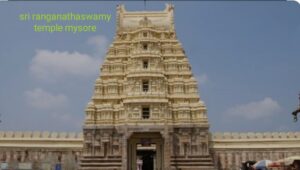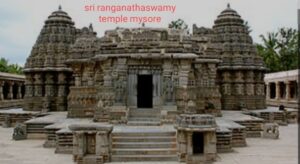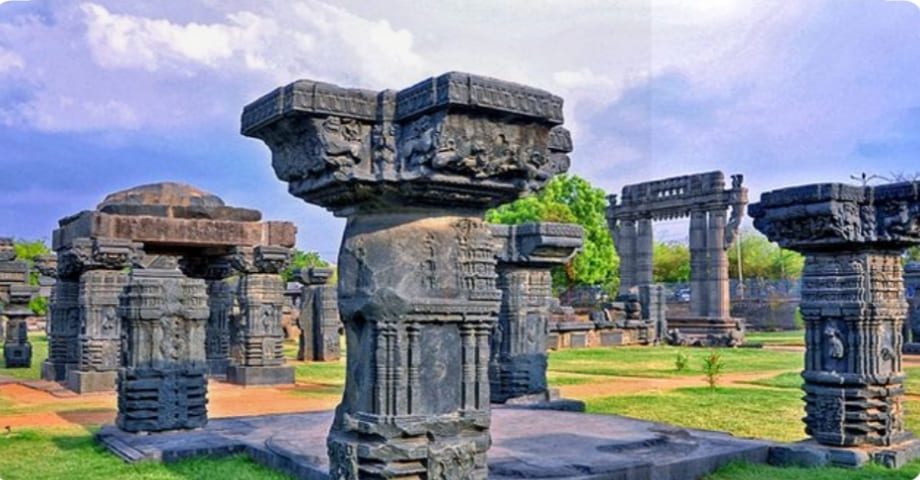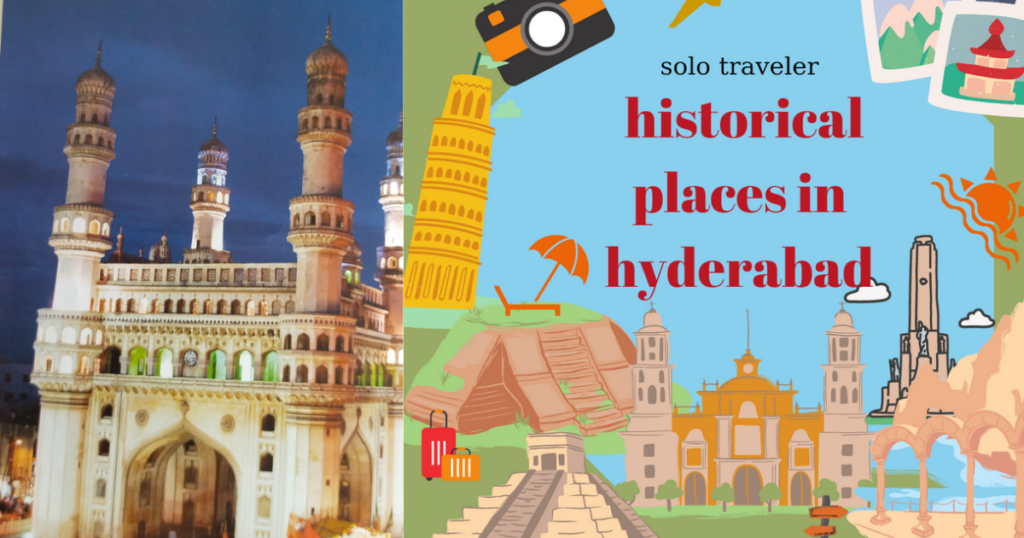Sri Ranganathaswamy Temple mysore, nestled in the heart of Mysore, is a beacon of devotion and architectural brilliance. This ancient temple is not just a place of worship but a testament to the rich cultural and religious history of the region. The temple, dedicated to Lord Ranganatha, a reclining form of Lord Vishnu, holds a special place in the hearts of the devotees and is a significant part of Mysore’s spiritual landscape. Its architectural splendor, combined with its historical significance, makes it a must-visit destination for pilgrims and tourists alike.

1.Sri Ranganathaswamy Temple Mysore: Historical Background
The origins of Sri Ranganathaswamy Temple can be traced back several centuries, with its construction believed to have been initiated by the rulers of the Ganga dynasty in the 9th century. However, the temple, as we see it today, has undergone numerous renovations and expansions under the patronage of various dynasties, including the Hoysalas and the Wodeyars of Mysore. The temple’s long history is intertwined with the region’s political and cultural developments, reflecting the dedication of the rulers who contributed to its grandeur. Each era left its mark on the temple, making it a living chronicle of Mysore’s history.
2.Sri Ranganathaswamy Temple Mysore: Architectural Marvel
The Sri Ranganathaswamy Temple is an exemplary display of Dravidian architecture, known for its intricate carvings, towering gopurams (gateway towers), and detailed sculptures. The main entrance is adorned with a grand gopuram that stands tall, showcasing the skill of the artisans who worked tirelessly to create this masterpiece. The temple’s sanctum sanctorum, where the idol of Lord Ranganatha is enshrined, is a peaceful haven that exudes spiritual energy.
One of the most striking features of the temple is its detailed carvings, which depict scenes from Hindu mythology, intricate floral patterns, and various deities. The temple complex also includes smaller shrines dedicated to other deities, each with its own unique architectural style. The layout of the temple is carefully planned, reflecting the cosmic order, which is a hallmark of Dravidian temple architecture.
The architectural grandeur of the Sri Ranganathaswamy Temple can be compared to other famous Ranganathaswamy temples in India, such as the one in Srirangam, Tamil Nadu. However, the Mysore temple stands out for its blend of simplicity and elegance, making it a unique spiritual destination.
3.Religious Significance
At the heart of Sri Ranganathaswamy Temple lies the idol of Lord Ranganatha, depicted in a reclining posture on the serpent Adishesha. This form of Lord Vishnu symbolizes peace, stability, and protection. The temple is an important pilgrimage site for Vaishnavites, followers of Lord Vishnu, and holds a significant place in the religious calendar.
One of the most celebrated festivals at the temple is Vaikunta Ekadasi, which marks the opening of the Vaikunta Dwaram (the gateway to heaven). Devotees flock to the temple during this time, seeking the blessings of Lord Ranganatha. Other important festivals include Brahmotsavam and Ratho toch vam, where the deity is taken out in grand processions, accompanied by traditional music and dance.
The rituals performed at Sri Ranganathaswamy Temple are deeply rooted in ancient traditions, with priests adhering to age-old customs to maintain the sanctity of the temple. Daily worship includes elaborate ceremonies, with offerings of flowers, fruits, and sweets, creating a divine atmosphere that captivates the devotees.

4.Cultural Importance
Beyond its religious significance, Sri Ranganathaswamy Temple plays a vital role in the cultural fabric of Mysore. The temple has been a center for classical music and dance, with many performances held during festivals and special occasions. The temple’s influence extends to local art forms, inspiring numerous paintings, sculptures, and literary works.
The temple is also a hub for community activities, serving as a gathering place for people from all walks of life. It fosters a sense of unity and continuity, preserving Mysore’s rich heritage and identity. The temple’s contribution to the cultural landscape of Mysore cannot be overstated, as it continues to be a source of inspiration for artists, scholars, and devotees alike.
5.Visitor Information
For those planning to visit Sri Ranganathaswamy Temple, the best time is during the winter months, from October to March, when the weather is pleasant, making it ideal for temple tours and sightseeing. The temple is open to visitors from early morning until late evening, with specific timings for different rituals.
Visitors are advised to adhere to the temple’s dress code, which requires modest clothing as a mark of respect. Men are typically expected to wear dhotis or trousers, while women should be dressed in sarees or salwar kameez. Footwear is not allowed inside the temple premises, and visitors should maintain silence and decorum while inside the temple.
Apart from the temple, Mysore offers a wealth of attractions that visitors can explore, such as the Mysore Palace, Chamundi Hill, and the Brindavan Gardens. A visit to Sri Ranganathaswamy Temple can be combined with these attractions to create a fulfilling cultural experience in the royal city of Mysore.
Conclusion:
Sri Ranganathaswamy Temple mysore,is more than just a religious site; it is a living testament to the history, architecture, and cultural richness of Mysore. Whether you are a devotee seeking spiritual solace or a traveler interested in exploring the architectural wonders of India, the temple offers a unique experience that transcends time. Visiting Sri Ranganathaswamy Temple is not just a journey through history but also a deep dive into the spiritual essence that defines Mysore.
FAQ:
1.What is the story behind Ranganathaswamy temple?
2.Which are the 3 important Ranganathaswamy Temple?
3.What is the entry fee for Ranganathaswamy Temple?
4.When should I visit Ranganathaswamy Temple?
5.Sri Ranganathaswamy Temple Timings
6.Sri Ranganathaswamy Temple Mysore timings
7.Sri Ranganathaswamy Temple history

